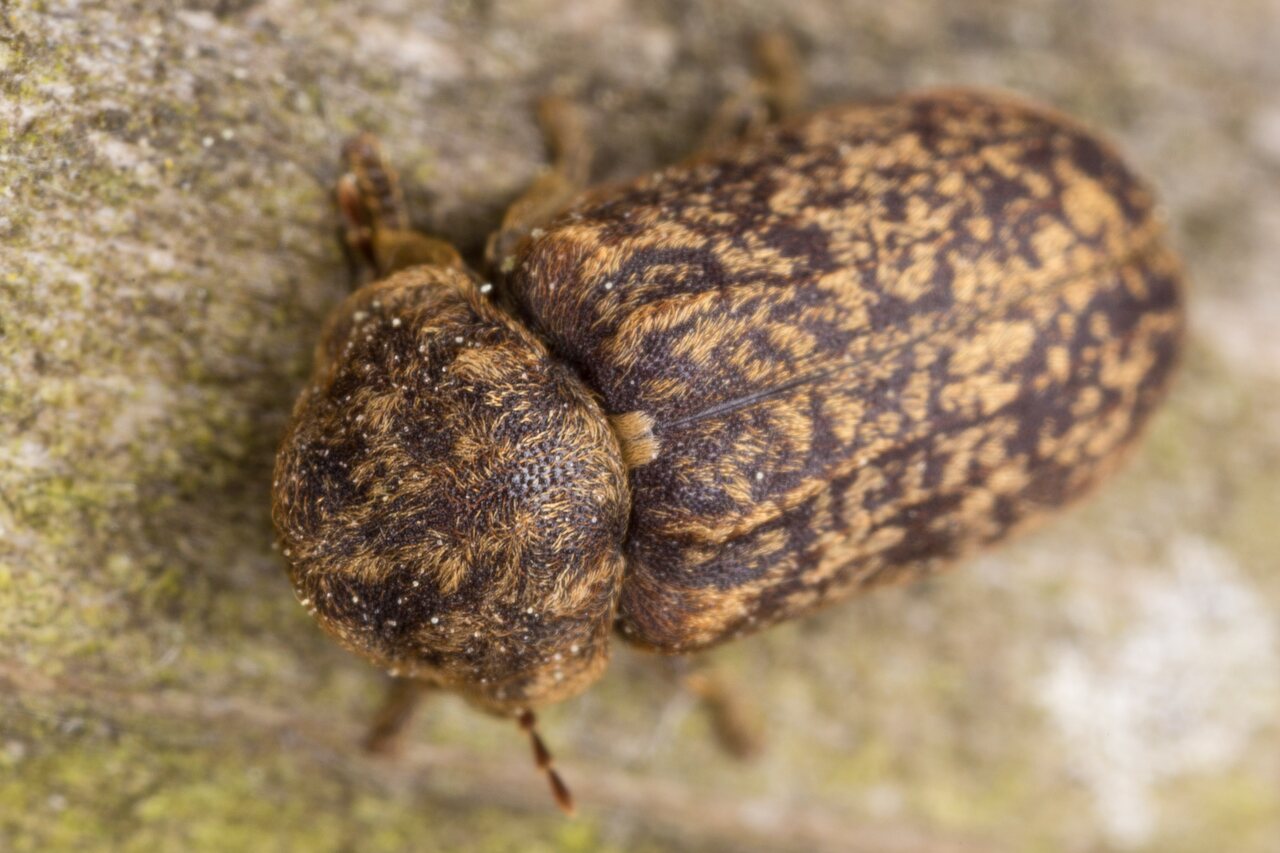
Xestobium rufovillosum · ąžuolinis skaptukas
- deathwatch beetle
- Gescheckte Nagekäfer, Bunte Pochkäfer
- ąžuolinis skaptukas
- ozolu ķirmis
- tykotek rudowłos
To attract mates, the adult insects create a tapping or ticking sound that can sometimes be heard in the rafters of old buildings on summer nights; therefore, the deathwatch beetle is associated with quiet, sleepless nights and is named for the vigil (watch) being kept beside the dying or dead. By extension, there exists a superstition that these sounds are an omen of impending death.
Females lay eggs in crevices in the wood or in the holes left by emerging beetles. The adults do not feed, and so die within a few weeks, by which time the female may have laid 40 to 80 eggs in small batches.
In buildings, deathwatch larvae infest old oak (or in some cases coniferous) timbers, especially those that have been the subject of fungal decay. Wood is difficult to digest, but as long as the wood has been softened by fungal decay, the enzymes in the guts of the larvae are able to digest the cellulose and hemicellulose forming the cell walls. The larvae growth is slow and it may take from two to ten years, or even more, for them to reach their full size. At this stage they pupate in a chamber close to the wood surface, and either emerge through a newly created hole after twenty to thirty days, or else emerge in the following spring.
The beetle does not infest wood that has recently died; many years must pass for dead oak to reach a suitable condition for attack. These beetles tend to stay on the same piece of wood for several generations until resources are used up and the piece of wood is no longer sufficient.
Kūnas tamsiai rudas, matinis, 5 – 9 mm ilgio. Apaugęs geltonų ir baltų plaukelių dėmėmis. Akys didelės, išgaubtos. Paskutiniai trys antenų nareliai didesni. Lervos iki 11 mm ilgio, vystosi sausoje senų, nudžiūvusių ąžuolų, rečiau gluosnių, tuopų ir kitų plačialapių medžių medienoje. Kartais apsigyvena mediniuose namuose iš ąžuolų rąstų. Vabalai aptinkami birželio mėn. ant nudžiūvusių ąžuolų kamienų.
Mediniuose namuose apsigyvenusių specifinis "tiksintis" skaptukų garsas buvo laikomas mirties pranašu. Pasak tautosakos, garsą dažniausiai girdėdavo sunerimę artimieji ir draugai, kurie sėdėdavo prie sunkiai sergančio žmogaus lovos, dažniausiai naktį. Lietuvoje reta rūšis. Aptinkamas senuose brandžiuose miškuose, kur yra senų nudžiūvusių ąžuolų. Įrašytas į Lietuvos raudonąją knygą.
‥